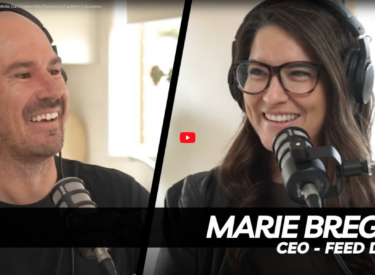In today’s digital age, businesses like yours rely heavily on social media platforms to promote their brand and connect with customers. Among the most popular platforms is Facebook, which offers a robust advertising system through its Meta Business Manager. However, navigating the world of Meta and its platforms can be a daunting task, particularly working through its Business Manager requirements and ownership setups. In this article, we’ll explore how businesses can get their Meta Business Manager in order and ensure that all their assets are correctly owned and organised.
Understand the Meta Business Manager Hierarchy.
Before diving into organising your assets, it’s crucial to understand the hierarchy of Meta Business Manager. At the top level, you have the Facebook Business Manager, which acts as a central hub for managing multiple assets such as ad accounts, Pages, and apps. Under the Business Manager, you can provide access to other Business Manager accounts that you would like to access your assets and act on your behalf (such as Feed!). By providing access via Business Manager you can streamline access and permissions while ensuring you retain ownership of all your assets – this is crucial!
Consolidate and Audit Existing Assets.
The first step in getting your Meta Business Manager in order is to consolidate and audit your existing assets. Take an inventory of all the assets associated with your business, these will include:
Pages
Business Manager accounts can share ownership or access to Facebook Pages. This allows multiple Business Managers to manage and post content on the same Page. Sharing access to Pages is particularly useful when collaborating with external partners, agencies, or clients.
Ad Accounts
Ad Accounts can be shared between Business Manager accounts, allowing multiple parties to manage advertising campaigns and budgets. Sharing ad account access is beneficial when working with advertising agencies or external marketing teams who require campaign oversight or implementation.
Pixels
The Facebook Pixel is a tracking code that enables businesses to collect data about user interactions on their websites. Pixel sharing allows Business Manager accounts to collaborate on pixel configuration and tracking across multiple domains. Sharing access to pixels is valuable when working with web development teams or external partners who need to implement pixel tracking.
Catalogs
Catalogs are used to organise product information and are essential for running dynamic product ads. Sharing catalog access allows multiple Business Manager accounts to manage and update product catalogs, making it useful when collaborating with distributors, retailers, or agencies responsible for product data management.
Commerce Accounts
Commerce Accounts are used for managing online shops and facilitating transactions on Facebook and Instagram. Sharing commerce account access allows multiple Business Manager accounts to collaborate on managing and optimizing the online shop, product listings, inventory, orders, and payments.
Instagram Accounts
If an Instagram account is connected to a Facebook Page, it can be shared with other Business Manager accounts. Sharing Instagram account access allows multiple parties to manage and post content on the same Instagram account.
Apps
Businesses that have developed Facebook apps can share app ownership or access with other Business Manager accounts. Sharing app access allows multiple teams to manage and update the app’s settings, permissions, and integration with Facebook’s APIs.
Custom Audiences
Custom Audiences are created based on customer data, such as email lists or website visitors. Sharing Custom Audience access enables different Business Manager accounts to utilize the same audience for ad targeting purposes.
Domains
Business Manager accounts can share ownership or access to domains. Sharing domain access allows multiple Business Manager accounts to configure and manage domain verification, control domain-level permissions, and set up domain-specific events for tracking and optimisation.
Identify any duplicate or obsolete assets and remove them to avoid confusion. Conduct a thorough audit to ensure that each asset is correctly owned and managed by the appropriate Business Manager account.
Centralise Ownership and Access.
To ensure all assets are correctly owned by the respective Business Manager accounts, it’s essential to centralise ownership and access. Designate a central team or individual responsible for managing the Meta Business Manager hierarchy. This team should have the authority to assign ownership of assets to the appropriate Business Manager accounts. By centralising ownership, you can maintain control and prevent unauthorised access.
Regularly Review and Update.
As your business evolves, your asset ownership and management requirements may change. It’s vital to regularly review and update your Meta Business Manager configuration. Conduct periodic audits to ensure all assets are still correctly owned and organised. If your business expands into new regions or acquires new clients, adapt your Business Asset Groups and ownership structure accordingly. By staying proactive, you can prevent potential issues and maintain a well-structured Meta Business Manager.
Efficiently organising your assets within Meta Business Manager is essential for effective management of your social media presence and advertising efforts. By understanding the hierarchy, consolidating assets, centralising ownership, and regularly reviewing and updating, businesses can ensure that their Meta Business Manager is in order and all assets are correctly owned and managed. Taking these steps will not only streamline your operations but also enable you to make the most of Facebook’s advertising platform for the growth and success of your business.



